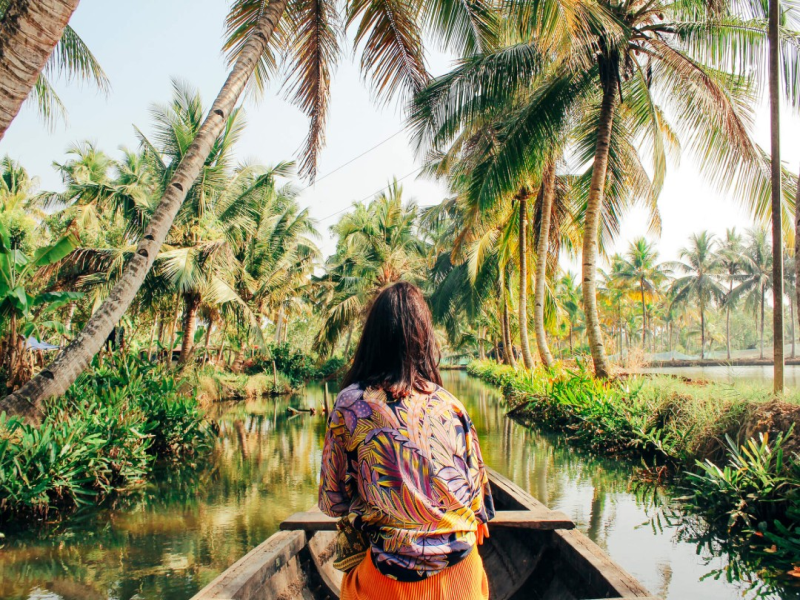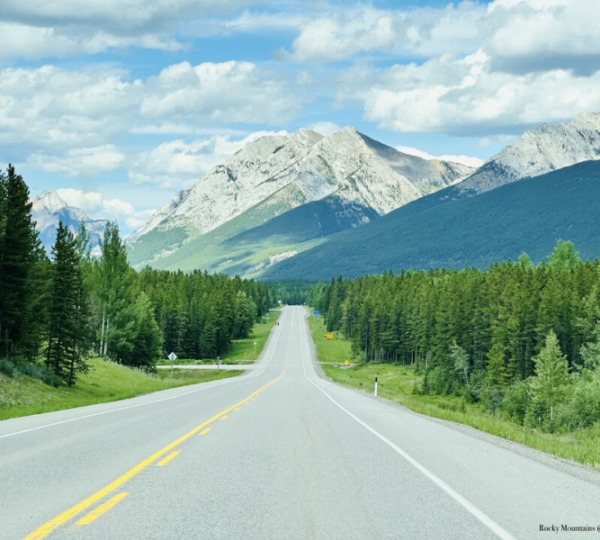Introduction
In the modern context dominated by speed, deadlines, etc., success often means getting to somewhere, rather than on the way. However, a rising trend is adapting to alter ideas and expectations and entails travelers to take their time instead of hurrying through their vacations. Slow travel is an ideology which supports tourists in ‘sane and thus healthy’ manner of travelling by encouraging tourists to better quality but less quantity of travel.

The Benefits of Slow Travel
Static tourism has very many advantages for the tourists as well as the toured destination. Here are some of the key advantages:
- Reduced stress and anxiety: Exploring destinations at a leisurely rate works to help a traveler mitigate stress and anxiety, since the travelers is on vacation.
- Deeper connection with the destination: Thus, by spending time and learning about a location more you can find yourself loving it for the culture, history and citizens it has.
- Increased mindfulness and self-awareness: One use of slow travel is that it helps you experience life in the present by not rushing for one novelty to the other.
- Sustainable impact on local communities: When opting for local purchases and avoiding negative impacts on the environment, one will be helpful in the growth of the places where the…”
The Philosophy of Slow Travel
Slow travel is, in fact, one of the variations of slow tourism, which stems from the principle of mindfulness, that is, being aware of the present moment, thoughts, emotions and physical sensations. Because slow travel makes the journey itself a priority, travel horizons becomes less destination oriented.
Sustainable Travel Practices
Slow travel is sustainable because slow travel is inherently sustainable. When you have opted for an environmentally friendly disposition and reduced your carbon footprint, you will be playing your part in assuring the earth is not depleted for future generations. Here are some tips for sustainable travel:
- Choose eco-friendly accommodations: Choose your lodging to be as environmentally friendly as possible, ranging from eco-friendly lodges, sustainable hotels and homesteads.
- Reduce your carbon footprint: Reduce your carbon footprint by using environmentally friendly ways of transport, avoiding wastage and saving energy.
- Support local communities: Shop local businesses, buy local products and get involved with the communities in the local economy.
Tips for Sustainable Packing
- Pack light: When going for whatever business no need for carrying a lot of items by so doing you help keep the environment green and also ease down transport.
- Choose sustainable materials: Choose carefully your accessories and clothes, and try to prefer natural, recyclable and non-damaging materials like organic cotton.
- Avoid single-use items: Carry along your own bottles with water, shopping bags and utensils for this helps in cutting down the wastes.
Cultural Immersion and Local Experiences
Indeed the part of slow travel that is perhaps the most satisfying is the possibility to visit and get to know local cultures and meet people. Here are some tips for immersing yourself in the culture of your destination:
- Learn local customs and traditions: Make sure to understand the country’s customs, culture and the etiquette to avoid learn a lesson the hard way.
- Support local businesses and artisans: Buy from local marketers and restaurants as a way of supporting the local economy.
- Engage with local communities: Pet the locals by standing in events like festivals, being a volunteer and etc.
Language Exchange Programs
Travel can also be enriched when you’re trying to learn a new language and speak with the people of the country you are visiting. Perhaps you can go for a language exchange program, or use your phone to download applications that will enhance on your language.
Volunteer Tourism
Volunteer tourism is exciting because you can help the locals while getting the experiences you need. Volunteer work is very possible and one can volunteer to work in educational systems, conserve the environment or even in the health sector.

Planning a Slow Travel Trip
Slow travel planning is different from regular travelling and can be explained by the following factors. Here are some tips for planning a successful slow travel adventure:
- Choose a destination: Choose a place which concerns you or is important to you or both.
- Create a flexible itinerary: Prevent over-organization and often leave time for improvising.
- Budget for slow travel: They can include hotel and lodge charges, transport costs, feeding and drinking charges, and charges for assorted trips and excursions.
Transportation Options
- Take public transportation: Taking public transport is one of the best things to go around and meet the local people while being an environmental friendly.
- Cycling or walking: Walking or cycling around is a great way to get to know the destination closely.
- Renting a car or motorcycle: Instead of guided tour heavily dependent on the schedules, if you want to have more freedom, you can always rent a car and drive around.
Accommodation Options
- Stay in local guesthouses or homestays: Booking at local facilities can be far more interesting and beneficial for the local people and companies.
- Camping or staying in eco-friendly accommodations: The other way is by camping or staying in an environment with friendly accommodation units in order to avoid polluting the environment.
- Couchsurfing or house sitting: Stay close to people and spend less during your traveling process with couch surfing or house sitting.
The Benefits of Slow Travel
Taking a look at the definition of slow travel, we can quickly observe that slow travel has many advantages for both travelers themselves and for the locations that they visit. Here are some of the key advantages:
- Reduced stress and anxiety: Carrying out vacations more slowly means that an individual does not feel stressed, or anxious.
- Deeper connection with the destination: If you take your time and get to wander around and feel the place then you get to have a sense of history of the place and the people who are living in that place.
- Increased mindfulness and self-awareness: Slow travelling teaches someone to take life slowly and embrace life by focusing on the beauty of small things in life.
- Sustainable impact on local communities: To help meet these goals, by shopping locally and reducing your carbon footprint, tourists can play their part in making sustainable the places they visit.
Overcoming Challenges
But slow travel is not without its challenges as it will be discussed below. Here are some common challenges and tips for overcoming them:
- Language barriers: Frankly, if you do not know the local language then try to learn a few phrases or better use the translator in your smart phone.
- Adapting to different cultures: One should learn to accept the customs and beliefs of the people they want to target.
- Managing unexpected situations: Expect uncertainty and be prepared for it, also try to be as diverse as you can.

Conclusion
Traveling slowly is fun and personally enriching especially when you explore another culture. Instead of rushing through the trip, trying to get to the next country, you we can leave a good impression around the world, while enjoying every bit of what it has to offer.
Proponents of slow travel are not just calling for people to take time while travelling; they are advocating for people to form an intimate relationship with the destination and other travelers. As the modern world suggests we priorities haste and getting things done, slow travel makes one slow down to really savor the adventure, and as such, transforms the activity of travelling into a process instead of a list of places to visit.
The slow travel system is about choosing depth over breadth; experiencing cultures at a slower and more profound level and helping to contribute towards more sustainable tourism to destinations. From sampling the home cooking of a family restaurant to walking through little-known neighborhoods in a town or city, to more generally seeing the world through different eyes, slow travel and encourages this sense of discovery.
Lastly, slow travel is a concept of traveling that not only adds value to the way we broach our destinations but also view life. It helps explain how it is okay to be passionate about something and associate with it on a personal level and how the process is a valuable end result. Therefore, on your next journey the best you have to try is to be less of a haste and treat each step like a victory.
References
- The Art of Slow Travel: A Guide to Mindful, Sustainable Travel.(2020). https://www.slowtravel.com/
- Slow Travel: A Guide to Mindful, Sustainable Travel.(2019). https://www.slowtravel.com/
- The Slow Travel Handbook: A Guide to Mindful, Sustainable Travel.(2018). https://www.slowtravel.com/
- Slow Travel: A Guide to Mindful, Sustainable Travel.(2017). https://www.slowtravel.com/
- Slow Travel: A Guide to Mindful, Sustainable Travel.(2016). https://www.slowtravel.com/
- Slow Travel: A Guide to Mindful, Sustainable Travel.(2015). https://www.slowtravel.com/
- Slow Travel: A Guide to Mindful, Sustainable Travel.(2014). https://www.slowtravel.com/
- Slow Travel: A Guide to Mindful, Sustainable Travel.(2013). https://www.slowtravel.com/
- Slow Travel: A Guide to Mindful, Sustainable Travel.(2012). https://www.slowtravel.com/
- Slow Travel: A Guide to Mindful, Sustainable Travel.(2011). https://www.slowtravel.com/
These are just a few examples of books and resources on slow travel. There are many other great options available, so be sure to do your research and find what works best for you.




